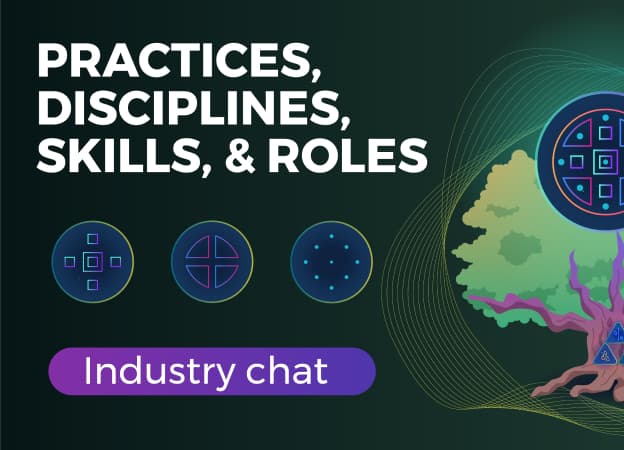Why Personalized Content at Scale Still Fails
Customers expect more than great products or services—they expect relevance. Whether through email marketing, social media, landing pages, or blog posts, brands are under pressure to deliver personalized content across every touchpoint. But meeting that expectation is easier said than done.
Many organizations pour time and budget into marketing campaigns, data collection, and content creation—only to find their personalized marketing efforts falling flat. Why? Because while the desire to tailor content based on customer data is clear, the execution is often blocked by deeper, structural problems.
Marketing and product teams often operate in silos, using disconnected systems that make it hard to reuse content or publish personalized experiences consistently across multiple channels. Even with a headless CMS or powerful personalization engine in place, the lack of structured content and clear processes makes tailoring content to individual needs a constant uphill battle.
Expectations have also evolved. Today’s users demand real-time, omnichannel experiences—where relevant content follows them across devices and platforms. And while AI and automation promise speed and scale, they still rely on the quality and structure of the data and content underneath.
That’s where most organizations hit a wall.
The truth is: that personalization isn’t just about inserting a name into an email or tweaking a landing page. It’s about understanding your target audience deeply and delivering the right type of content, at the right time, in the right place. And that requires more than just tools—it requires a foundation.
Content engineering is that foundation.
Often invisible but critical, content engineering provides the structured data, Metadata, and publishing logic that allows organizations to create personalized content that scales. It connects customer data to pieces of content and builds the internal building blocks that enable reuse, flexibility, and a better user experience—across your CMS, web pages, social channels, and beyond.
In this article, we’ll explore how structuring your content and aligning your systems can finally unlock the full benefits of personalized content delivery—long-term.
What Is Content Engineering? (And Why It's the Missing Piece in Personalized Content)
If content is the fuel that powers personalized marketing, content engineering is the system that refines, packages, and delivers that fuel — precisely when and where it’s needed.
To explain what content engineering is, let’s use a metaphor.
Think of Content Engineering as a Digital Library for Personalization
Imagine walking into a beautiful library — not one filled with dusty books on wooden shelves, but a smart, modular, digital library.
- The content is like books and articles.
- The structure and Metadata are like the cataloging system and search engine.
- The delivery systems are like librarians who understand your preferences and bring you the exact content you need, in real time.
Now imagine that same library… without structure. Books are scattered. There’s no way to search. Everyone gets the same recommendation no matter who they are. That’s what content personalization looks like without content engineering — disorganized, generic, and deeply inefficient.
Content engineering is the practice of turning content into well-structured, reusable, machine-readable data. It’s what enables organizations to deliver relevant content — all tailored to the target audience’s needs, behavior, and context.
So, What Is Content Engineering?
In plain terms:
Content engineering is the design and construction of content systems that make personalized content delivery possible.
It includes:
- Modeling Content into reusable building blocks (text, images, CTAs, tags, etc.)
- Applying Metadata and Taxonomy to enrich and organize content
- Using APIs to publish content to multiple channels automatically
- Automating workflows so content can be tailored, updated, and reused without manual duplication
- Integrating customer data (demographics, behavioral data, preferences) to personalize the content experience
This work happens behind the scenes — but it’s foundational to creating relevant content, improving user experience, and increasing conversion rates across touchpoints.
7 Reasons Content Engineering Matters for Personalization & Scale
Here are seven reasons why structured content is the missing link in scalable, effective, and human-centered digital experiences.
1. Frees Up Developer Time and Speeds Up Launches
Without structured content, developers often spend excessive time manually adapting and hardcoding content for websites and apps. This slows time-to-market, increases the risk of errors, and drains resources.
With content engineering:
- Developers access content through APIs instead of manually updating code.
- Structured content models allow teams to reuse content across multiple channels automatically.
- Product launches, marketing campaigns, and updates happen faster — with fewer bugs and less back-and-forth.
Example: An e-commerce brand missed a key product launch window because its content had to be manually formatted for each platform. With a headless CMS and structured content, that entire process could’ve been automated and launched in hours, not days.
2. Maximizes ROI on CMS and Personalization Tools
Companies invest in powerful CMS platforms and personalization engines — but fail to unlock their full potential due to unstructured, siloed content.
Content engineering bridges that gap by:
- Structuring content into modular components
- Making it accessible via APIs
- Enabling features like dynamic assembly, contextual delivery, and AI-powered recommendations
Example: A retailer struggling with poor product recommendations restructured its content, applied Metadata, and integrated APIs. Suddenly, their personalization engine worked as intended — leading to higher conversion rates and improved customer satisfaction.
3. Enables Scalability and Long-Term Adaptability
As your business grows — more users, more products, more languages — manually managing content breaks down. Personalization at scale becomes unmanageable.
Content engineering future-proofs your content operations:
- Reusable content components reduce duplication and effort
- Structured data supports translation, localization, and omnichannel delivery
- A single source of truth ensures consistency and adaptability over time
Example: Structured content allowed a global brand to scale from one language to 15+ with zero duplication and minimal rework.
4. Improves Sales Enablement and Buyer Engagement
Buyers expect relevant, timely content at every stage of the journey. Generic messaging just doesn’t cut it anymore.
Content engineering supports the sales funnel by:
- Delivering content tailored to buyer behavior, preferences, and context
- Integrating with CRM and marketing tools to serve the right content automatically
- Enabling personalized landing pages, product recommendations, and dynamic offers
Example: A B2B software company used structured content and APIs to create personalized campaigns by industry and persona. The result? Higher lead quality, faster sales cycles, and better conversion rates.
5. Creates Better Customer Experiences
Structured content might sound technical, but its result is deeply human. It enables more relevant, consistent, and engaging customer experiences.
Why it works:
- Content adapts in real-time to user behavior, location, and device
- Metadata adds context and makes content discoverable and meaningful
- Personalization becomes seamless — not robotic
Example: Customers who once received repetitive, irrelevant messages now enjoy content tailored to their needs. That creates not just satisfaction, but brand loyalty and long-term value.
6. Bridges Marketing and IT Silos
Marketing wants agility. IT wants stability. Content engineering gives them a shared foundation to collaborate.
How it helps:
- Common content models create a shared language
- APIs provide clean, scalable access to content
- Teams can co-own structured systems without constant handoffs
Example: A global e-commerce company implemented a headless CMS with shared content models. Now, marketing can launch campaigns without waiting for IT, and IT no longer fields last-minute change requests. Everyone wins.
7. Gives Organizations a Competitive Edge
In a fast-moving digital world, agility and intelligence matter. Structured content makes both possible.
With content engineering, you can:
- Quickly update messaging in response to market shifts
- A/B test content variations and optimize based on performance
- Deliver consistent omnichannel experiences across web pages, apps, and even smart devices
Example: A streaming platform used structured Metadata to power smart recommendations across devices — boosting engagement and global reach while staying nimble in a competitive market.
What Happens Without Content Engineering?
Without content engineering, organizations fall into a cycle of manual work, messy systems, and missed opportunities. The intention to deliver personalized content turns into a reality of chaos, delays, and generic experiences.
Here’s what that looks like.
Fragmented Content = Inconsistent Experiences
Imagine a digital workspace where blog posts live in one CMS, product data in a spreadsheet, and customer support content in a separate, outdated knowledge base. Teams duplicate content across platforms, hardcode it into templates, and use different formats for every channel.
The result?
- Conflicting product info between your website and email marketing
- Broken links on landing pages
- A brand voice that feels different in every social media post
Without a centralized structure, publishing content becomes a guessing game — and customers notice.
Manual Work Drains Teams and Slows Campaigns
Without structured content and APIs, teams spend hours copying, pasting, formatting, and tagging content across platforms. A single update like changing a headline or product detail can take days to apply everywhere.
This slows campaign launches, drains creative energy, and increases the likelihood of human error.
Teams fall behind, deadlines are missed, and strategy takes a backseat to survival mode.
Personalization Falls Flat
Marketers think they’re personalizing using a customer’s first name in an email or showing “related products” but these are surface-level tactics.
Without structured content and Metadata:
- Personalization engines can’t match content to individual preferences
- Recommendations feel random or irrelevant
- Messaging lacks context and nuance
The result? Customers feel like just another data point — not a person.
Delays Become the Norm
Content bottlenecks slow down everything: website updates, product launches, and campaign rollouts.
- Developers are forced to make manual changes to hardcoded content
- Marketing teams can’t move fast enough to respond to trends
- Localization takes weeks instead of days
Everyone feels the pressure from content creators and product managers to executives watching timelines slip and revenue shrink.
Quick Fixes = Long-Term Technical Debt
To compensate, dev teams resort to “band-aid” solutions: hardcoding text, creating ad-hoc APIs, hacking databases, or using spreadsheets for content management.
These workarounds pile up into brittle systems that are:
- Costly to maintain
- Difficult to scale
- Vulnerable to performance and security issues
In the long run, these shortcuts become roadblocks to innovation.
Customers Notice — and Leave
Without personalization and consistency, customers face:
- Irrelevant offers and content
- Conflicting messages across channels
- Cold, robotic interactions that don’t acknowledge their needs
This deteriorates trust and loyalty. It makes the brand feel disconnected or worse, like it just doesn’t care.
When the customer experience suffers, so does retention, satisfaction, and long-term revenue.
You Can’t Automate What Isn’t Structured
AI and automation tools are only as good as the data they’re fed. Without structured content:
- Personalization engines can’t deliver contextual content
- Machine learning models struggle to learn patterns
- Omnichannel delivery becomes a manual, inconsistent effort
The promise of scalable, personalized customer experiences falls apart without the building blocks in place.
Bottom line?
Without content engineering, every piece of content becomes harder to manage, personalize, and scale — hurting both the customer experience and the organization’s ability to grow.
Getting Started with Content Engineering
So you understand the value of content engineering — now what?
The good news: you don’t have to overhaul your entire tech stack or rewrite every page of content to get started. Content engineering is most successful when approached with small, strategic steps that grow into long-term capabilities.
Here’s how to begin.
Shift the Mindset: Content Is Data
The first step is reframing how your organization thinks about content. Content isn’t just words on a page — it’s a system of data points. Treating content as structured, modular, and reusable allows you to tailor it across landing pages, emails, apps, and more.
This mindset unlocks the foundation for personalization, automation, and omnichannel delivery.
Start Small: Pilot Projects & Audits
Look for a high-impact but manageable starting point:
- Structure a small set of blog posts using reusable components (title, body, author, tags).
- Build a product information API that feeds consistent data to web pages, emails, and sales collateral.
- Create modular email templates that dynamically personalize content based on behavioral data.
Or begin with a content audit:
- Inventory your content types
- Map where they’re published
- Evaluate Metadata and identify reuse opportunities
- Check if your current CMS supports custom fields or content APIs
Free tools like Google Sheets, Postman, or Miro can support this discovery phase without a major investment.
Build a Cross-Functional Team
Content engineering sits at the intersection of marketing, IT, content, design, and product. Start by forming a working group that includes all of these roles. Define a shared vocabulary (a content glossary goes a long way), hold joint planning sessions, and align on shared goals.
Marketing may care about faster campaigns. IT wants stable systems. Product needs consistent UX. Content engineering delivers on all three.
Add Structure, One Block at a Time
You don’t need a headless CMS to begin. You can:
- Use custom fields in your existing CMS
- Apply semantic HTML to improve structure
- Add consistent Metadata like tags, categories, and audience segments
- Create shared templates that reinforce modular design
As you mature, consider investing in a headless CMS, content APIs, or personalization platforms — once the content itself is ready to support them.
Measure and Celebrate Progress
Early signs of success include:
- Faster time-to-publish
- Increased content reuse across multiple channels
- Fewer errors and inconsistencies
- Higher engagement from personalized content
- Better collaboration across teams
Track simple KPIs like reuse rate, time-to-market, personalization lift, or developer hours saved and share those wins internally. Momentum is your best advocate for future investment.
The Time to Start Is Now
Content engineering is the missing link between content creation and personalized customer experiences at scale.
Without it, content becomes siloed, personalization stays superficial, and digital systems struggle to keep up. But with it, organizations can create meaningful, data-driven, omnichannel experiences — faster, smarter, and with less waste.
You don’t need to be perfect to begin. Start small. Structure one piece of content. Create one reusable component. Add one layer of Metadata.
The benefits grow with every step.
Content personalization isn’t just about having the right tools — it’s about preparing the content to be used well.
And that starts with content engineering.



